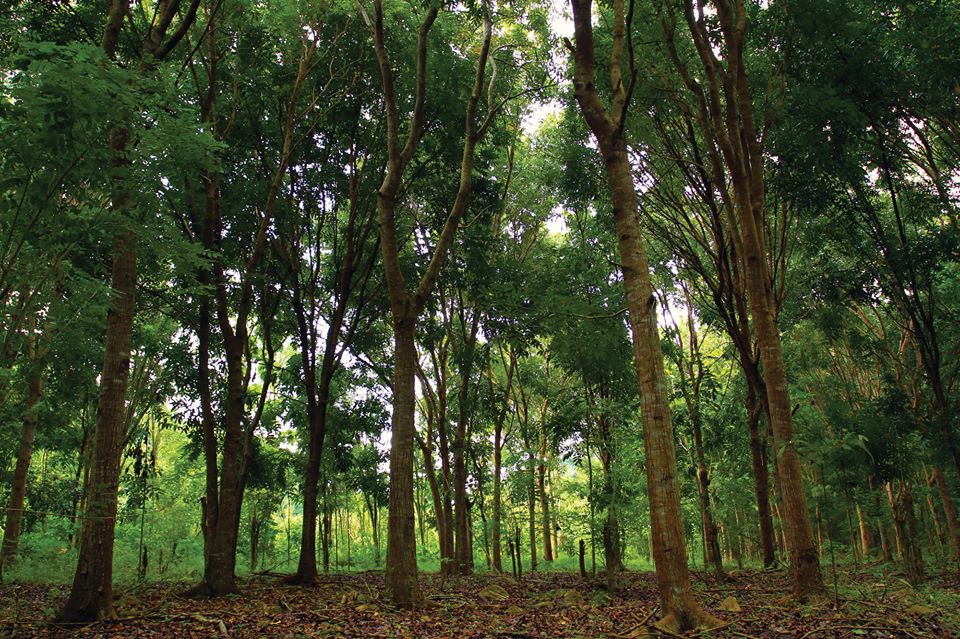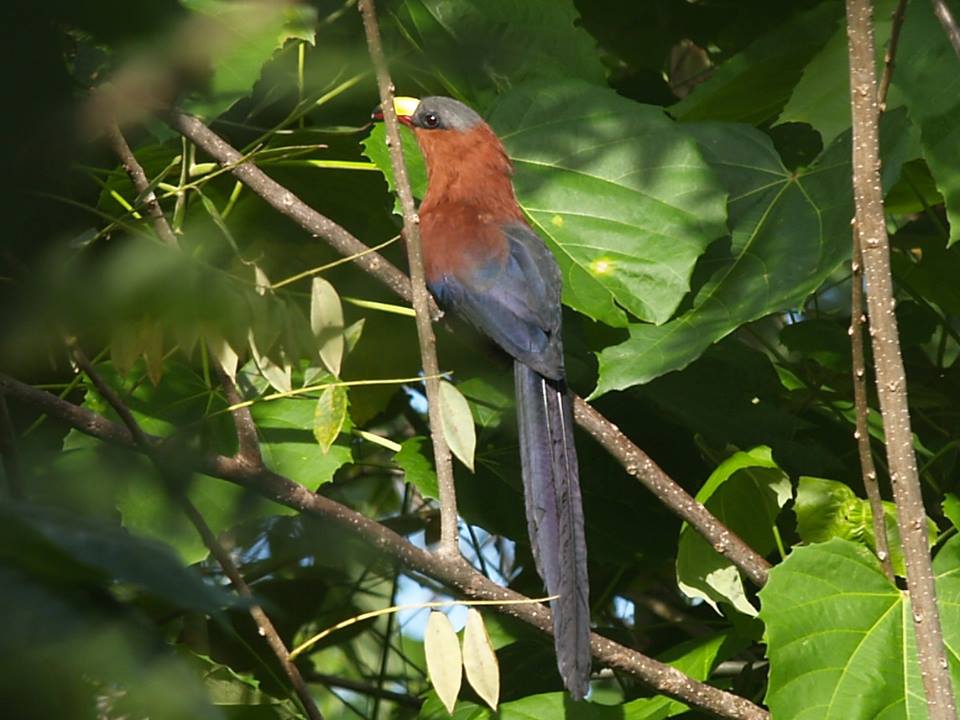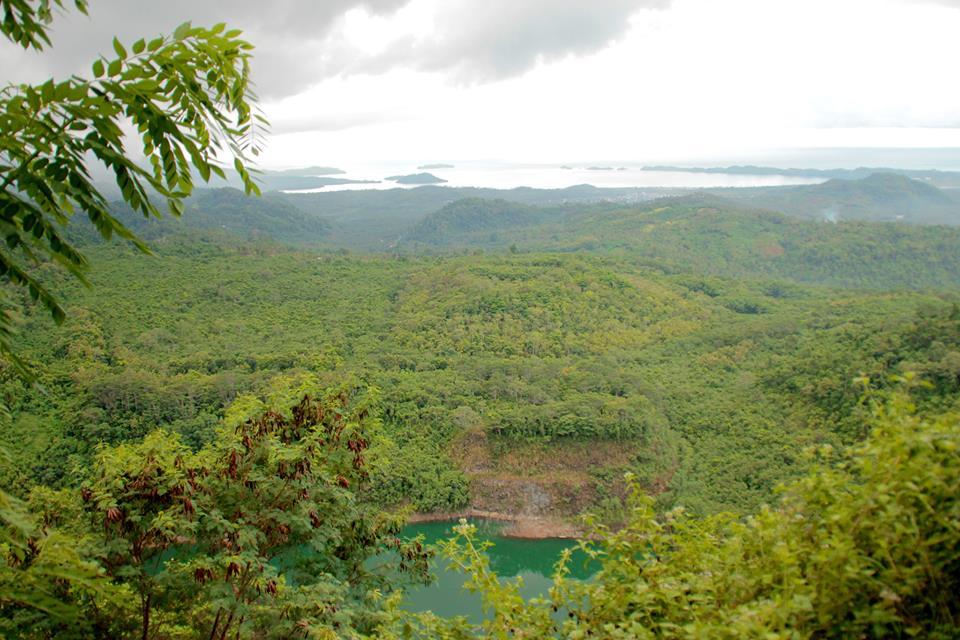In 2011, the Indonesian government was given the task of transforming 443ha of revegetated land from a former mine site into a botanical garden and the country’s first-ever carbon absorption project
GARY PETERS looks into the project’s challenges and potential benefits
In use since 1996, the former PT Newmont Minahasa Raya-operated (PTNMR) mine site, located in the Mesel gold mine area, has changed beyond all recognition. Once mineral extraction ceased in 2001, when mineable economic gold deposits became depleted, PTNMR – a joint venture between the Newmont Mining Corporation located in Denver, US, and PT Tanjung Serapung in Indonesia – sat about putting its reclamation project into practice.
PTNMR’s closure plan was submitted to the government in March 2002 and approved in December of the same year, with mineral processes continuing until 2004. Closure activities were eventually completed in 2006 and PTNMR’s monitoring lasted until 2010.
The site was one of the first large-scale mines in Indonesia to close and reforestation started with 155,814 tree and fruit crops planted on 20Oha of reclaimed land.
A MAGNET FOR TOURISM
The project has involved the Indonesian Department of Forestry, the Indonesian Institute of Sciences, the University of Sam Ratulangi, the North Sulawesi Sustainable Development Foundation and other local constituents through a collaborative process.
The trees planted – mahogany, teak, nyatoh and sengon – were based on a multi-purpose tree species system and are part of larger reclamation works to return the site to its original purpose and create a botanical garden that acts as a magnet for tourism, providing both economic and environmental benefits.
According to figures released by the Forestry Department of North Sulawesi, reclamation success rates have reached 92.82%, around 12% higher than the government’s standard. “The success of the reclamation at Minahasa is reflected in the fact that Indonesia’s Ministry of Forestry designated 221 hectares of the reforested mine site as a botanical garden,” says Omar Jabara, group executive of corporate communications at Newmont Mining.
Jabara believes that the project demonstrates how “mines can be discovered, operated and closed responsibly”, but admits that gaining approval for the garden – granted in 2014 – was a complicated process. “Seeking botanical garden designation is a long and arduous process, requiring approvals and endorsement from various local governments, as well as research and analysis to assess a botanical garden’s potential social, economic and environmental impacts.”
Scheduled for completion in five to seven years, it will, says Jabara, “be a tourist destination for thousands of regional and international visitors annually and, through entrance fees and taxes, will contribute to regional revenue”.
“Both the reclaimed forest and botanical garden have the potential to create positive economic and environmental conditions for local inhabitants,” he says. “In addition, the site’s botanical garden designation ensures [that] the habitats of hundreds of species of plants, birds, insects and other animals will be protected.”
Looking forward, it is hoped that this diversity of species will enable the reclaimed forest and garden to become areas for environmental research and education, acting as outdoor classrooms and laboratories.
SUSTAINABLE SOLUTIONS
As part of PTNMR’s sustainable development for the mine closure, opinions from local communities were sought. One avenue for discussion between different parties is the community consultative committee, which consists of community leaders and members from local villages close to the mine site and wider area.
A prime concern, according to a case study created by PTNMR entitled ‘Sustainable development for post closure’, was that villages would suffer through a loss of contractors and local wages. The answer from PTNMR was to introduce sustainable social programs across areas such as micro-finance, fisheries and agricultural technology, as well as vocational training for communities.
One such example is the mangrove rehabilitation in Ratatotok and Buyat. By working with non-governmental organizations and local groups, there has been a push towards restoring the sites as part of the reforestation of the wider mine closure. This has seen approximately 50,000 mangroves planted on 5ha of village land, producing 10,000 mangrove seedlings of local species.
RECLAIMED BY NATURE
PTNMR’s transformation of the gold mine centers around three concepts: environmental, economic and social sustainability.
The first includes the mangrove rehabilitation, reclamation forest and artificial coral reefs at Buyat Bay and Totok Bay. The reefs are home to more than 3,000 reef balls that mimic the habitat of fish and other organisms – providing economic benefits through the development of fish stock and underwater diving tourism.
Monitoring by the fishery and marine faculty of Sam Ratulangi University discovered that the reefs’ biodiversity of coral fish was similar to what would be found in natural reefs, and surveys up until 2009 highlighted that 83 species and 4,171 individual organisms had inhabited the reefs.
On the environmental aspect, Jabara adds: “Although in years past some claimed the Minahasa mine polluted the environment, ongoing independent testing has shown that the mine was operated and closed responsibly. The reclaimed forest also has become a model for carbon absorption.”
Social sustainability focuses on community foundations, created to ensure that the closure does not negatively affect the surrounding communities of Ratatotok and Buyat. A majority of these are educational and environmental programmes, such as grants for students and the construction of health centres.
Moving forward, PTNMR and its partners will continue with the creation of the botanical garden, reclamation forest and other sustainable initiatives, demonstrating that the closure of a mine can be the start of a different type of era. •
SOURCE: http://www.nridigital.com/mine-digital-magazine/may-2015 ]





